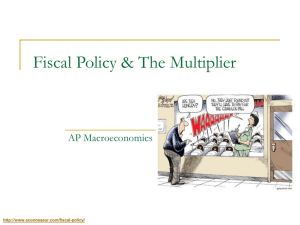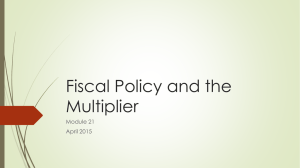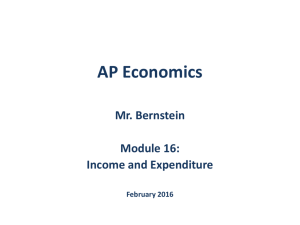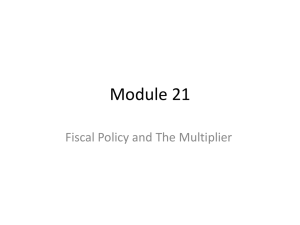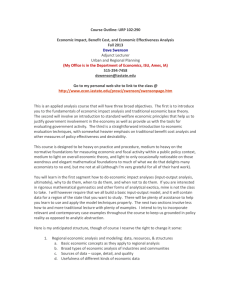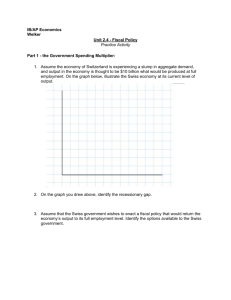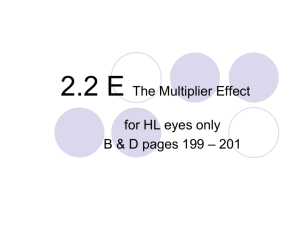Law for Business
advertisement
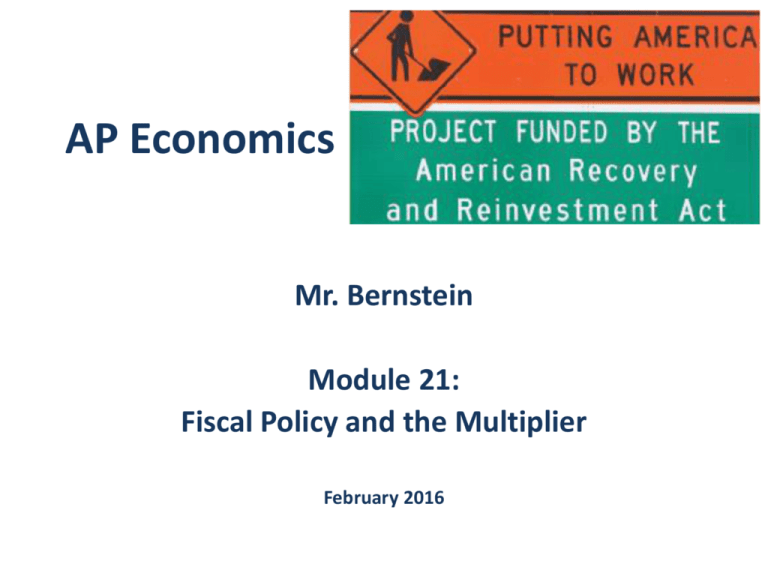
AP Economics Mr. Bernstein Module 21: Fiscal Policy and the Multiplier February 2016 AP Economics Mr. Bernstein Fiscal Policy and the Multiplier • Objectives - Understand each of the following: • Why Fiscal Policy Has a Multiplier Effect • How the Multiplier Effect is influenced by Automatic Stabilizers 2 AP Economics Mr. Bernstein Multiplier Effect of an Increase in Government Purchases of Goods and Services • MPC = .90; so spending multiplier M = 1 / (1-.9) = 10 • Increase G by $50b leads to $50b x 10 = $500b increase in AD • Decrease in G works similarly • Recent example: The Sequester 3 AP Economics Mr. Bernstein Multiplier Effect of Changes in Government Transfers and Taxes • MPC = .90; so spending multiplier = 1 / (1-.9) = 10 • Reducing Income Taxes by $10b leads to $10b x .9 = $9b increase in new spending, which then multiplies into $9b x 10 or $90b increase in AD • Tax Multiplier Tm = MPC*M = MPC/(1-MPC) • Increase in Transfers works similarly • Recent example: Reduction in SNAP 4 AP Economics Mr. Bernstein Automatic Stabilizers • Government spending and taxation rules that cause fiscal policy to be automatically expansionary when the economy contracts and automatically contractionary when the economy expands, without requiring any deliberate action by policy makers • Progressive tax rates • AKA “Non-discretionary” fiscal policy • Example: Increase G4 AD increases4 Yd increases4 then taxes increase4 Yd increases slow 5
